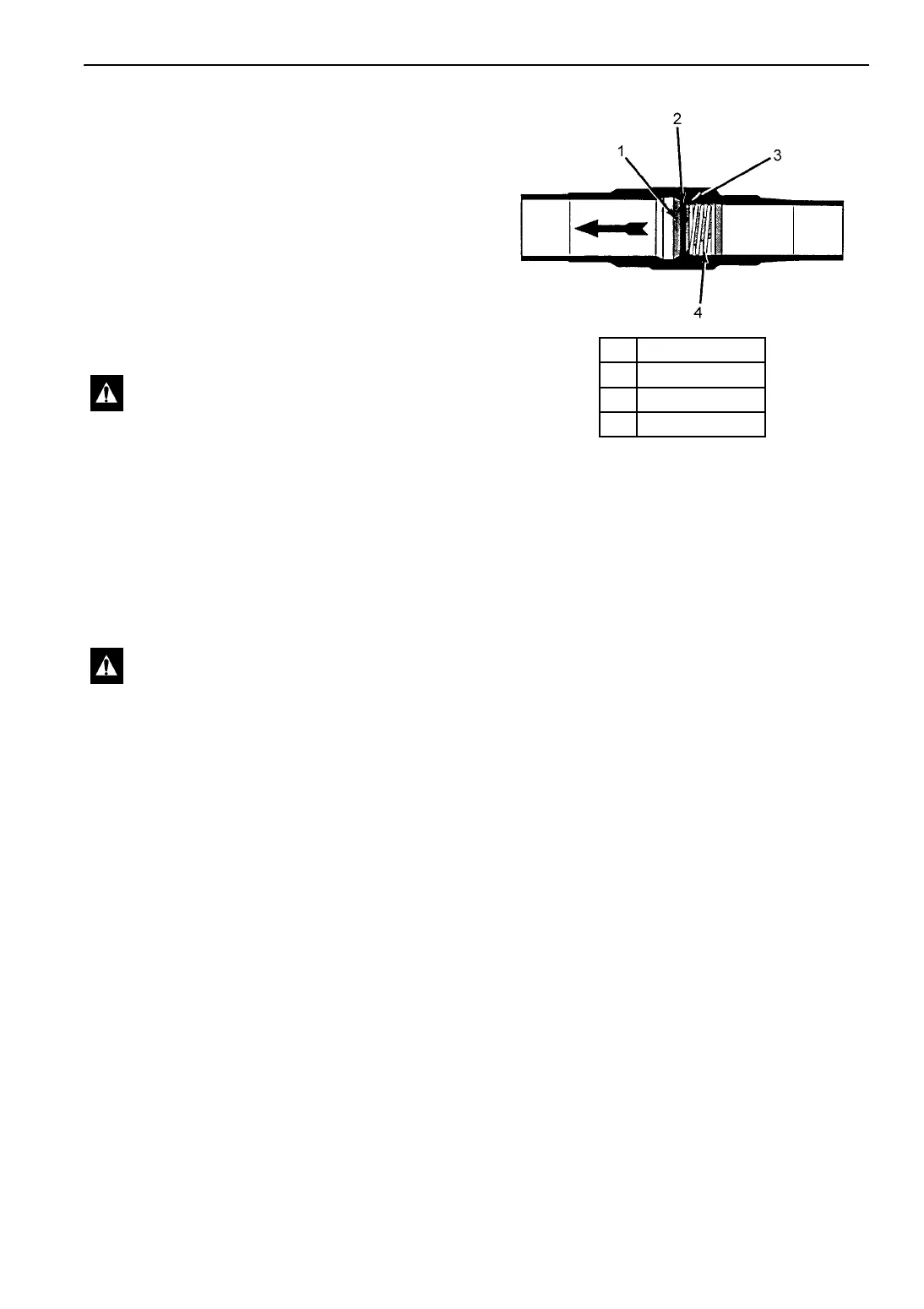Refrigeration Service Operations
149
Solenoid Valves
NOTE: Valves that have nylon seats must be
disassembled before soldering.
Removal
1. Recover the refrigerant charge.
2. Remove the coil, and disassemble the valve if
necessary.
3. Unsolder the refrigeration lines from the
valve, and remove the valve from the unit.
Installation
1. Clean the tubes for soldering.
2. Remove the coil, disassemble the valve if
necessary, and place the valve in position.
3. Solder the inlet and outlet connections. After
the valve cools, assemble the valve and install
the coil.
4. Pressurize the refrigeration system and test for
leaks.
5. If no leaks are found, evacuate the system.
6. Recharge the unit with proper refrigerant and
check the compressor oil.
In-Line Check Valves
This unit uses some in-line check valves. An
in-line check valve is not repairable and must be
replaced if it fails. A heat sink must be used on the
in-line check valve when it is being soldered in
place to prevent damage to the neoprene seal.
Removal
1. Recover the refrigerant charge.
2. Place a heat sink on the check valve.
3. Unsolder the lines and remove the check
valve.
Installation
NOTE: A heat sink must be used on the in-line
check valve when it is being soldered in place to
prevent damage to the neoprene seal.
1. Clean the tubes for soldering.
2. Place the check valve in position. The arrow
on the valve body indicates the direction of
refrigerant flow through the valve.
3. Place a heat sink on the check valve.
4. Solder the inlet and outlet connections.
5. Pressurize the refrigeration system and test for
leaks.
6. If no leaks are found, evacuate the system.
7. Recharge the unit with proper refrigerant and
check the compressor oil.
CAUTION: Use a heat sink to prevent
damage.
CAUTION: Use a heat sink to prevent
damage.
1. Valve
2. Neoprene Seal
3. Valve Seat
4. Spring
Figure 173: Cross Section of In-line Check Valve

